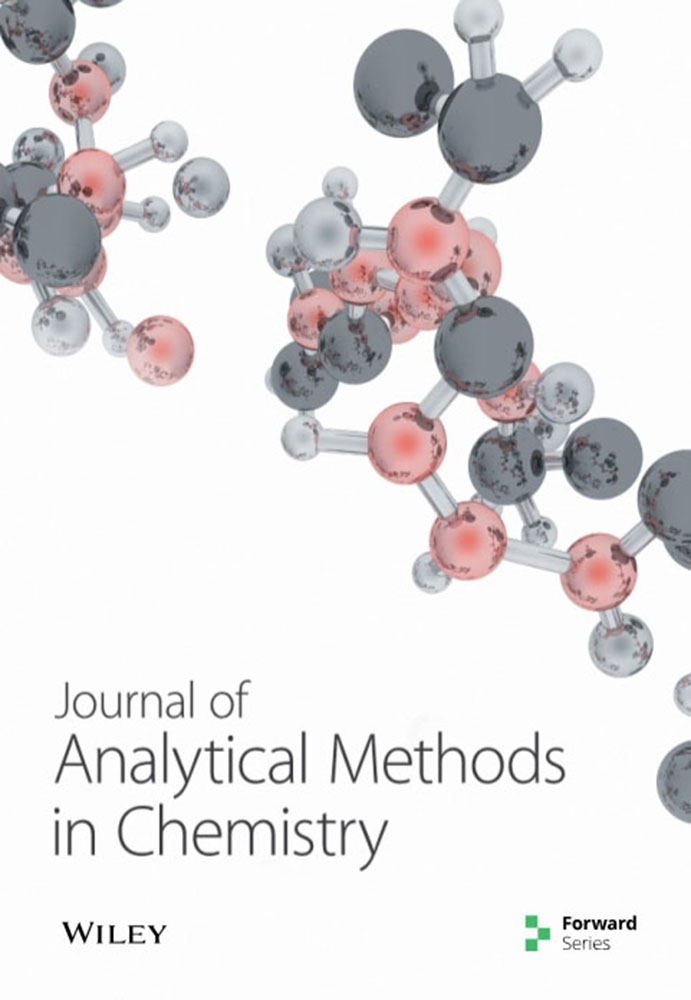A Novel Analysis Method for Simultaneous Determination of 31 Pesticides by High-Performance Liquid Chromatography-Tandem Mass Spectrometry in Ginseng
IF 2.3
3区 化学
Q3 CHEMISTRY, ANALYTICAL
引用次数: 5
Abstract
Ginseng is a perennial herb with a long growth cycle and is known to easily accumulate pesticides during its growth process, seriously threatening people's health. Therefore, to ensure safe consumption, it is necessary to detect and monitor pesticide residues in ginseng. In this study, a novel analysis method was established for simultaneous determination of 31 pesticides in ginseng by high-performance liquid chromatography-mass spectrometry. Ginseng samples were extracted using acetonitrile, cleaned up by primary secondary amine (PSA) solid-phase extraction column eluted with acetonitrile-toluene, and then detected in multiple reaction mode (MRM). The calibration curves of target compounds were linear in the range of 0.005–1.0 mg/L, with correlation coefficients greater than 0.9921. The limits of detection of all the pesticides in ginseng were between 4.4×10−5 and 1.6 × 10−2 mg/kg. For fresh ginseng, the average recoveries ranged from 72.1 to 111.6%, and the relative standard deviations were 1.3–12.2%. For dry ginseng, the average recoveries were 74.3–108.3%, and the relative standard deviations were 0.9–14.9%. The residual concentrations of some pesticides in real samples were greater than the maximum residue limit (MRL) for European Union (EU). The method established here is rapid and simple with high sensitivity and good reproducibility, which is sensitive in the residue analysis of many pesticides in ginseng.高效液相色谱-串联质谱法同时测定人参中31种农药
人参是一种多年生草本植物,生长周期长,在生长过程中容易积累农药,严重威胁人们的健康。因此,为了保证人参的安全食用,有必要对人参中的农药残留进行检测和监测。建立了高效液相色谱-质谱联用法同时测定人参中31种农药的分析方法。人参样品用乙腈提取,用乙腈-甲苯洗脱的伯仲胺(PSA)固相萃取柱清洗,然后用多反应模式(MRM)检测。目标化合物在0.005 ~ 1.0 mg/L范围内呈良好的线性关系,相关系数大于0.9921。人参中所有农药的检出限在4.4×10−5 ~ 1.6 ×10−2 mg/kg之间。鲜人参的平均加样回收率为72.1 ~ 111.6%,相对标准偏差为1.3 ~ 12.2%。干参的平均加样回收率为74.3 ~ 108.3%,相对标准偏差为0.9 ~ 14.9%。部分农药在实际样品中的残留浓度大于欧盟规定的最大残留限量。该方法快速简便,灵敏度高,重现性好,可用于人参中多种农药的残留分析。
本文章由计算机程序翻译,如有差异,请以英文原文为准。
求助全文
约1分钟内获得全文
求助全文
来源期刊

Journal of Analytical Methods in Chemistry
CHEMISTRY, ANALYTICAL-ENGINEERING, CIVIL
CiteScore
4.80
自引率
3.80%
发文量
79
审稿时长
6-12 weeks
期刊介绍:
Journal of Analytical Methods in Chemistry publishes papers reporting methods and instrumentation for chemical analysis, and their application to real-world problems. Articles may be either practical or theoretical.
Subject areas include (but are by no means limited to):
Separation
Spectroscopy
Mass spectrometry
Chromatography
Analytical Sample Preparation
Electrochemical analysis
Hyphenated techniques
Data processing
As well as original research, Journal of Analytical Methods in Chemistry also publishes focused review articles that examine the state of the art, identify emerging trends, and suggest future directions for developing fields.
 求助内容:
求助内容: 应助结果提醒方式:
应助结果提醒方式:


